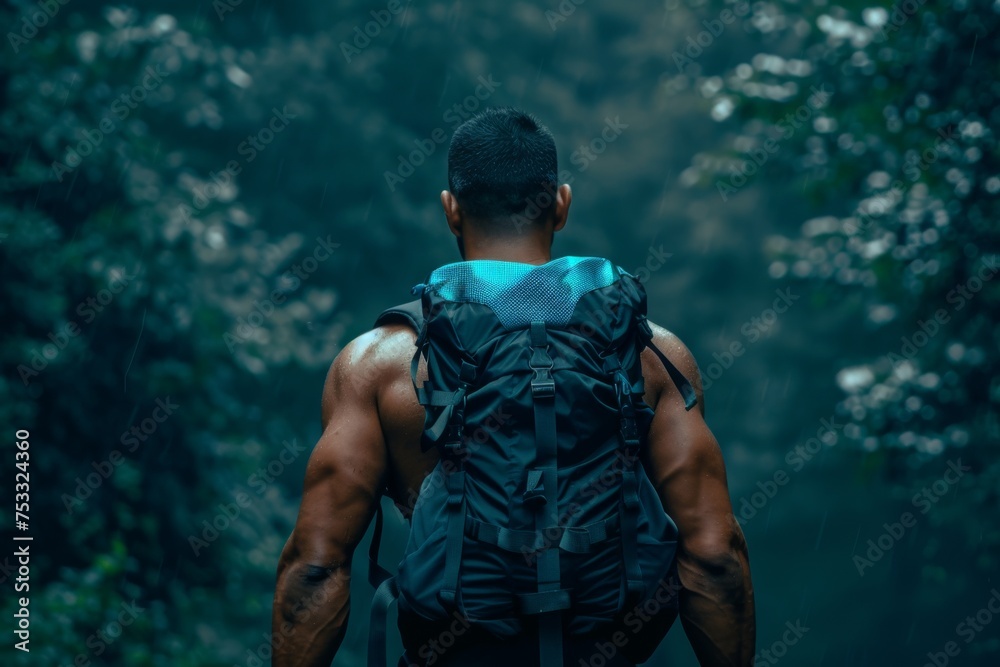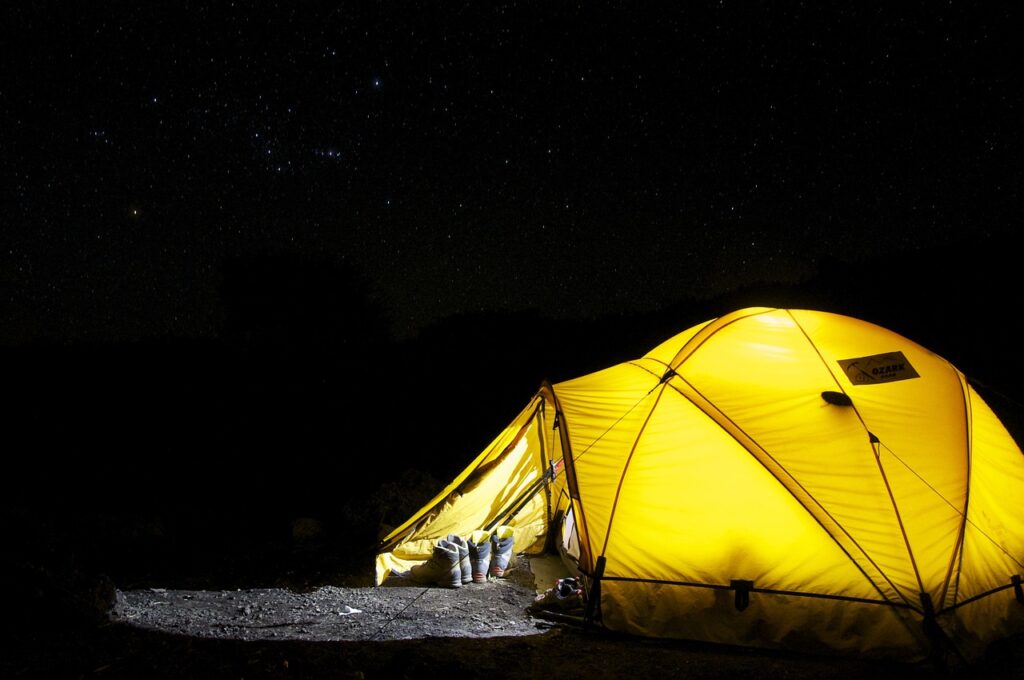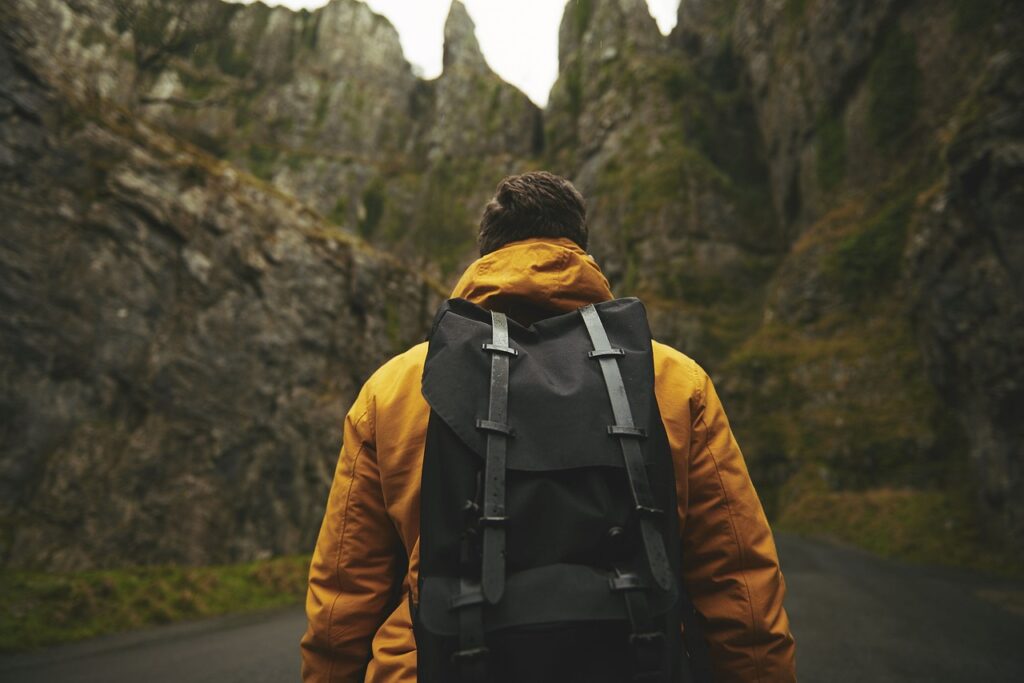Anyone who has been on a backpacking trip knows how physical it can be. Many trails are steep, winding through mountain ranges. At times there are creeks to forge, logs to cross, and sometimes stairs to climb. Most destinations worth hiking to are several miles from the trailhead. Therefore, a backpacker must get in shape before taking the trip.
Where Do You Begin with Training?
A web search will yield an endless amount of advice when it comes to fitness. There is so much information on the internet that you may find yourself dazed and confused. There are many schools of thought when it comes to physical fitness and diet. Some of these ideas will seem to contradict each other.
Therefore, we must stick to the basics. In this post, I will assemble a simple guide that has helped me train for big backpacking trips in the past. This doesn’t have to be complicated.
Disclaimer: I am not a doctor, nutritionist, dietitian, or anything like that. I am a maintenance technician, blogger, and avid outdoorsman. The advice in this article is only my opinion based on my own experience and research. I have used the following information to get myself in shape more than once. Please consult with a doctor or trained professional before committing to any diet or special exercise.
Clean up your diet to get in shape for backpacking
I believe cleaning up your diet should be the first step in this process. I would also argue that this may be the most important step. Our bodies can do more and go further if we fuel it properly. Here are a few fundamentals to keep in mind with your diet.
Eat Plenty of Protein
Protein is what allows our bodies to build and maintain muscle. It also helps keep us satiated throughout the day. If we are satisfied, we won’t be craving junk food all day. Strive to eat close to 1 gram of protein per pound of body weight. If you weigh 150 pounds, try to eat 150 grams of protein throughout the day, every day.
Protein can be found in nuts, seeds, grains, and bread. However, it is much more plentiful and easier to absorb when coming from lean meats and dairy products. I recommend eating a wide variety of foods that contain protein to hit your goal each day.
Hitting your protein goal will maximize the amount of lean muscle you can build and maintain.
Eat a Good Balance of All Three Macronutrients
The three macronutrients that we get from our food are Protein, Fats, and Carbohydrates. To put this in perspective, an example of protein would be lean meat. Fat comes from things like butter and other dairy products, animal fat, and oils such as avocado oil, olive oil, and many others. Carbohydrates come from foods like bread, rice, pasta, potatoes, and sugary snacks.
I have found that eating a good balance of all three macronutrients helps to stay satisfied and properly fueled for day-to-day activities as well as intense workouts.
Eat Most of Your Carbohydrates Before and After Your Workouts
Some people are scared to death to eat carbohydrates. There is a large camp that believes they are the reason for obesity and other problems.
Despite what many folks say on the internet, carbohydrates will not make you fat or kill you if they are consumed in moderation. Carbs can provide much-needed energy for workouts. Not to mention, they are delicious and are arguably the most enjoyable macronutrient to eat.
If you are scared to consume carbs, let me suggest trying to eat them close to your workouts. Carbs will provide quick energy that can be amazing for strength training as well as cardio. If you eat carbs before and after a hard workout, they will get burned up and used as fuel.
Control your Calories to Lose Weight and Get in Shape for Backpacking.
The secret to losing weight is to control your calories. If you are overweight and want to lose some fat, you must consume less calories than you burn. This calorie deficit will cause your body to burn fat.
If you are very thin and would like to bulk up and add some muscle to your frame, eat slightly more calories. With increased calories and plenty of protein, your body will have what it needs to build muscle. Especially when coupled with resistance training.
The easiest way I have found to monitor calories is by using an app that will help you track what you’re eating. This will require weighing or measuring out all the food you eat in a day. You can enter the food and the app will track your total. Adjust this up or down from the maintenance level the app gives you to lose or gain weight.
Keep in mind that this is a slow process. Don’t freak out if the scale doesn’t change day to day. Stay consistent and I assure you, the weight will do what you want from week to week and month to month.
Eliminate Junk Food from Your Diet to Hit Your Fitness Goals
Despite what most people say, you can eat junk food and still be in shape. As long as your calories are where they need to be and you are hitting your protein goals, junk food will not slow you down much. You will be much happier and more committed to the process if you eat some junk food that you enjoy. Just track it and stick to the plan.
However, most people don’t eat junk food in moderation. Junk food such as cakes, cookies, and candies have tons of calories! It is so easy to overeat these kinds of foods and go way beyond your calorie budget for the day. This is the reason junk food gets such a bad reputation.
I recommend staying within your calorie budget, hitting your protein goal, and incorporating some fun foods into your diet when you can. Eat mostly whole and healthy foods to feel good and stay on track.
Affiliate Disclosure: Links in this post may be amazon affiliate links. This means I will recieve a commission if a purchase is made through these links. There will be no cost to you.
Improve Your Cardiovascular System to Get in Shape for Backpacking
This should go without saying. If you want to hike a mountain trail or go long distances with a pack on your back, you are going to need some cardiovascular endurance. This is where the term “Cardio” comes from. We all know what cardio is. You’d better get a treadmill.
There are so many ways to get cardio into your training regimen. It doesn’t have to be done on a treadmill in your basement. (Although that’s how I do it……most of the time.) Here are a few ways to get cardio training.
- Treadmill
- Stationary Bike
- Rowing Machine
- Jump Rope
- Running Outside
- Mountain Biking
- Rucking
- Swimming
What I recommend is finding ways to do cardio that fits your lifestyle and makes it enjoyable for you. I also recommend switching things up and trying several of these to keep things interesting. When you train cardio, you will be able to hike a steep trail without getting winded as easily.
Use Progressive Overload to Keep Improving your Cardio
One thing to avoid is doing the same thing for the same time or distance day after day. It is very important to use what we call progressive overload. This means that the goal is to increase the resistance or the distance day after day.
If you run on the treadmill for two miles in 20 minutes, aim to do it at 19:50 tomorrow. You could also increase the degree of incline if your treadmill has that option. If you’re rucking, try to increase the amount of weight you carry from week to week. This is progressive overload and will keep you moving toward your fitness goals.
Here are a few cardio machines that have all the features for progressive overload.
Treadmill: https://amzn.to/3Vb0pmB
Stationary Bike: https://amzn.to/3vf8gVp
Rowing Machine: https://amzn.to/3TbD8hH
Elliptical: https://amzn.to/43hl8as
Use strength training to get in shape for backpacking
Now that we have discussed cardiovascular training, the next topic we must address is strength training. Backpacking requires climbing steep grades, climbing over logs and rocks, setting up a campsite, cutting wood, and most obviously, carrying all your gear! Therefore, you must maximize your strength and put on some lean muscle. The only way to accomplish this is with strength training.
Strength training is done by performing exercises with resistance. Resistance can be created by using bands, body weight, or my favorite, weights.
Here are some examples of exercises that use only body weight as resistance.
- Push-ups
- Dips
- Crunches and sit-ups
- Body weight squats
- Lunges
- Pull-ups
These bodyweight exercises are great for beginners and individuals who have limited access to equipment. The downside to these movements is they are more challenging to use progressive overload. Sometimes with bodyweight movements, the only way we can incorporate progressive overload is to add reps. It is often hard to add weight to these movements. However, I did find some methods to add weight to these movements. Here are some links to those options.
Weighted belt: https://amzn.to/3Vfj0xL
Weighted Vest: https://amzn.to/4cfV2Zd
It is much easier to use progressive overload with weightlifting. I would recommend investing in some weightlifting equipment or joining a gym to maximize strength training and put on some muscle.
Here is a list of my favorite weightlifting exercises
- Bench press
- Overhead Press
- Squats
- Split Squats
- Deadlifts
- Stiff-legged deadlifts
- Rows
- Curls
- Dumbbell presses and extensions
- Cable movements
Here are some links for basic gear that will be enough to get you started at home. This equipment is what I use and recommend.
Rack/Cage: https://amzn.to/3VfM73T
Bar and Plates: https://amzn.to/3Pjhozr
Bench: https://amzn.to/3IzbTst
Dumbbells: https://amzn.to/43eQWMY
Use Resistance Bands for Strength Training
If you can’t put together a home gym, consider buying some bands to add resistance to your exercises. These can be good for vacations or out-of-town work trips. They are easy to pack and can be very effective for strength training. Here is a link for a good set of resistance bands.
Resistance Bands: https://amzn.to/4adS4CZ
Conclusion
Your next backpacking trip can be much more enjoyable if you get your body in good shape. Proper training can improve your experience exponentially. When getting your fitness in check it is important to stick to the basics and follow the fundamentals that have been known for decades and even centuries.
Some rules of fitness and health are unchanging, no matter what fads the internet is pushing. Control your diet, improve your cardiovascular endurance, and build strength. Although these methods aren’t easy, they are simple. They don’t work like a quick fix or magic wand, but with consistency, they are effective.
For tips on what to pack for your next trip, read my article here. Backpacking-you need these 11 essential items for every trip (streamandtimber.com)
Good Luck!



